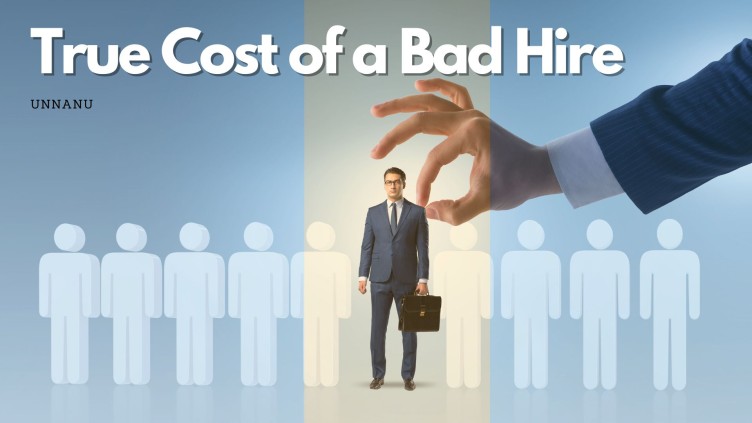How It Impacts Your Bottom Line:
Sourcing the right talent is crucial to a company’s success and a principal task for any hiring manager. Yet, occasionally, their recruiting decisions fall short. This is a common occurrence, as evinced by a 2017 CareerBuilder Survey declaring that 74% of employers have unwittingly onboarded an unsuitable fit for a role.
The financial repercussions of an ill-suited hire can be significant. The U.S. Department of Labor approximates this cost to equate to about 30% of the employee’s projected first-year earnings. So, for an employee with a yearly salary of $50,000, this may mean a loss of $15,000 for the company. However, there is no unanimous agreement on this figure, with some suggesting the cost is higher. The contention arises due to the difficulty in assigning a precise dollar value to certain indirect expenses resulting from bad hires.
The True Price Tag of a Bad Hire: Calculating the Costs
The true price tag of a bad hire goes beyond just the expense of finding and training a replacement. It extends to decreased productivity, strained co-worker relationships, wasted time, and negative impacts on customer satisfaction. These costs, often hidden, can inflict significant damage to the company’s bottom line in addition to undermining team morale and its business reputation. When calculating these costs, business leaders need a comprehensive understanding of the detrimental effects a bad hire can bring. Therefore, investing time and resources in finding the right person for a job is crucial for any organization, as the right hire can save your company both financial and non-monetary resources while driving growth and success in the long run.
How do you calculate cost per hire?
Cost per hire is calculated by adding up all the expenses involved in the hiring process and dividing it by the total number of hires in a certain time period.
Here’s a breakdown of how you should calculate:
1. Calculate total recruiting costs: include costs like job postings, recruiting software, recruiting agency fees, advertising, job fair costs, amongst others.
2. Calculate total personnel costs: this includes wages and benefits for HR staff involved in the hiring process, from creating job descriptions and posting ads to screening resumes, conducting interviews, and finalizing offers.
3. Add both totals (total recruiting costs + total personnel costs)
4. Finally, divide this sum by the number of new hires during the same period.
Formula: Cost per hire = (Total recruiting costs + Total personnel costs) / Total number of hires
For example, if your total recruiting costs are $10,000, your total personnel costs are $5,000 and you made 10 hires during the period, your cost per hire would be ($10,000 + $5,000) / 10 = $1,500 per hire.
Bad Hires and Productivity Loss: A Steep Price to Pay
Making a bad hire can be costly for a business. Beyond the obvious financial expenses, bad hires can also lead to decreases in productivity, damage to team morale, and potential harm to a company’s reputation. According to a survey by the Society for Human Resource Management, the average cost of a bad hire can be up to five times the individual’s annual salary. Moreover, CareerBuilder estimates that 74% of companies who admitted they’ve hired the wrong person for a position lost an average of $14,900 for each bad hire.
Loss of productivity is perhaps the most straightforward cost associated with a bad hire. A worker who isn’t performing well simply won’t be producing as much as someone who is. Plus, a bad hire could also cause productivity to decline among other employees. If one person isn’t pulling their weight, it could lead to resentment among the team and a general drop in morale.
Moreover, making a bad hire can cause businesses to lose out on the opportunity cost of hiring a more suitable candidate. Every day a bad hire remains in a position is a day the job isn’t being done effectively and a day a better hire could have been contributing to the business.
A bad hire can also be damaging to a company’s reputation. The behavior and performance of an employee can affect how customers, clients, and even other employees perceive the company. Bad hires can directly affect a company’s image and customer satisfaction, from poor customer service to missed deadlines.
In addition, managing a bad hire can consume management’s time that could have been invested in more productive endeavors. Managers may spend too much time supervising a single employee or dealing with conflicts and issues due to a bad hire. This is not the best use of a manager’s time and can hamper the overall productivity of the whole team.
Preventing bad hires isn’t always possible, but there are steps that businesses can take to minimize the risk, including thorough background checks, multiple interview rounds, skill tests, and even trial periods for potential new hires. A cautious and comprehensive approach to hiring can save a business significant time and money over the long run.




